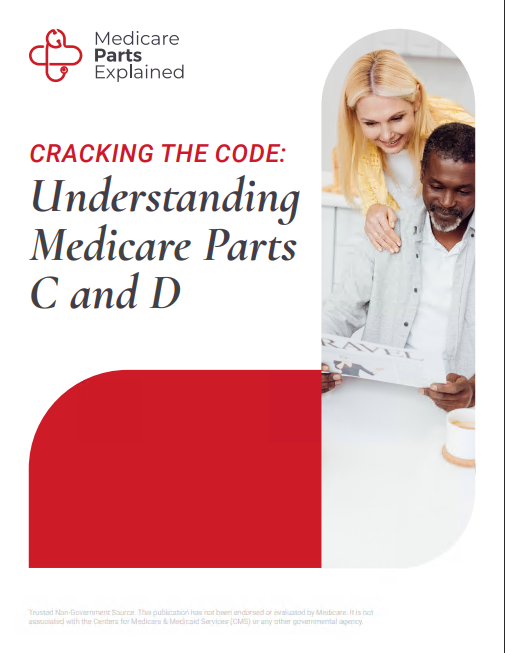Medicare Part D Enrollment Process and Eligibility
Introduction to Medicare Part D Enrollment
Enrolling in Medicare Part D prescription drug coverage is an essential step for beneficiaries seeking access to affordable medications. Understanding the enrollment process, eligibility criteria, and enrollment periods is crucial for ensuring timely and seamless access to prescription drug benefits. In this guide, we’ll explore the details of the Medicare Part D enrollment process and eligibility requirements, providing valuable insights to help beneficiaries navigate their prescription drug coverage options effectively.
Overview of Medicare Part D Enrollment Periods
Medicare Part D enrollment is typically conducted during specific enrollment periods, including:
- Initial Enrollment Period (IEP): The IEP is the seven-month period that begins three months before a beneficiary’s 65th birthday month, includes the birthday month, and extends for three months afterward. Beneficiaries can enroll in a Part D plan without facing a late enrollment penalty during this period.
- Annual Enrollment Period (AEP): The AEP, also known as the Open Enrollment Period, occurs annually from October 15th to December 7th. During this period, beneficiaries can enroll in a Part D plan for the first time, switch plans, or drop coverage altogether.
- Special Enrollment Period (SEP): Beneficiaries may qualify for a Special Enrollment Period outside of the standard enrollment periods under certain circumstances, such as moving to a new area, losing creditable prescription drug coverage, or qualifying for Extra Help.
To be eligible for Medicare Part D prescription drug coverage, beneficiaries must meet the following criteria:
- Enrollment in Medicare Part A and/or Part B: Beneficiaries must be enrolled in either Medicare Part A or Part B to be eligible for Part D coverage.
- Residence in Plan Service Area: Beneficiaries must reside in the service area of the Part D plan they wish to enroll in.
- Enrollment in a Qualified Prescription Drug Plan: Beneficiaries must enroll in a Medicare-approved Prescription Drug Plan (PDP) or a Medicare Advantage plan (Part C) that includes prescription drug coverage.
Medicare Part D Enrollment Process
The enrollment process for Medicare Part D prescription drug coverage typically involves the following steps:
- Research Plans: Before enrolling, beneficiaries should research available Part D plans in their area, considering factors such as formulary, premiums, cost-sharing, and pharmacy network.
- Compare Plans: Compare multiple Part D plans to find the one that best meets your prescription drug needs and budget. Use the Medicare Plan Finder tool or contact Medicare for assistance.
- Enroll Online, by Phone, or by Mail: Once you’ve chosen a Part D plan, you can enroll online through the Medicare website, by phone with the plan provider, or by completing a paper enrollment form and mailing it to the plan provider.
- Review Confirmation Materials: After enrolling, review the confirmation materials provided by the plan to ensure that your enrollment information is accurate and that you understand your coverage and benefits.
- Pay Premiums: If your Part D plan has a monthly premium, be sure to pay it on time to maintain your coverage. Some plans offer automatic payment options for added convenience.
Late Enrollment Penalties
It’s essential for beneficiaries to enroll in Medicare Part D prescription drug coverage during their Initial Enrollment Period to avoid late enrollment penalties. The late enrollment penalty is calculated by multiplying 1% of the national base beneficiary premium by the number of full, uncovered months the beneficiary was eligible but didn’t enroll in Part D or have other creditable prescription drug coverage. Beneficiaries may owe this penalty for as long as they have Medicare Part D coverage.
Special Enrollment Periods for Medicare Part D
Certain circumstances may qualify beneficiaries for a Special Enrollment Period outside of the standard enrollment periods. Some common examples include:
- Moving to a New Area: If beneficiaries move to a new location outside of their current Part D plan’s service area, they may qualify for a Special Enrollment Period to enroll in a new plan.
- Losing Creditable Coverage: If beneficiaries lose creditable prescription drug coverage through an employer or union plan, they may qualify for a Special Enrollment Period to enroll in a Part D plan.
- Qualifying for Extra Help: Beneficiaries who qualify for Extra Help, a program that helps pay for Medicare prescription drug costs, may be eligible for a Special Enrollment Period to enroll in a Part D plan or change plans once per quarter.
Conclusion: Navigating Medicare Part D Enrollment with Confidence
Understanding the Medicare Part D enrollment process and eligibility requirements is essential for beneficiaries seeking access to affordable prescription drug coverage. By familiarizing themselves with the enrollment periods, eligibility criteria, and enrollment steps, beneficiaries can navigate their Part D options with confidence and ensure timely access to prescription medications. Whether enrolling during the Initial Enrollment Period, Annual Enrollment Period, or a Special Enrollment Period, beneficiaries can make informed decisions about their prescription drug coverage and take control of their healthcare needs.




